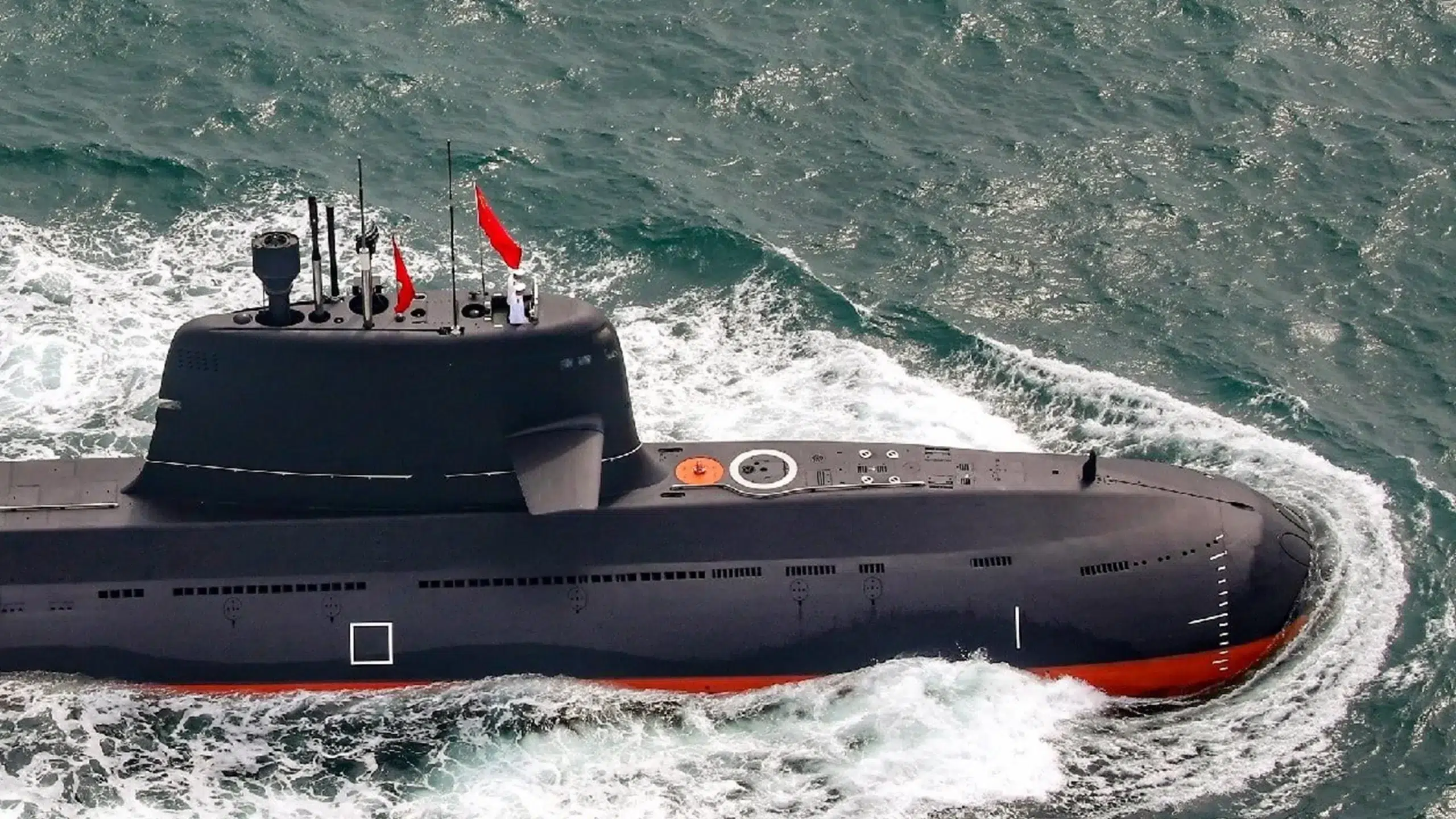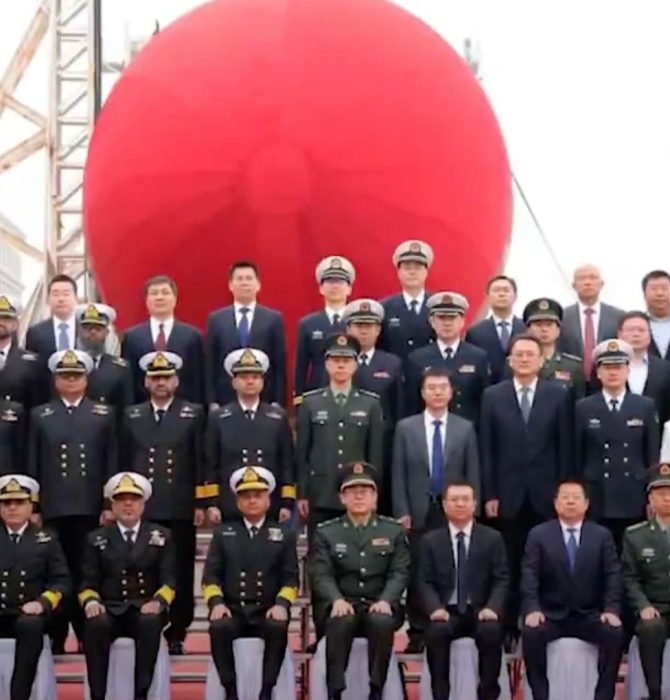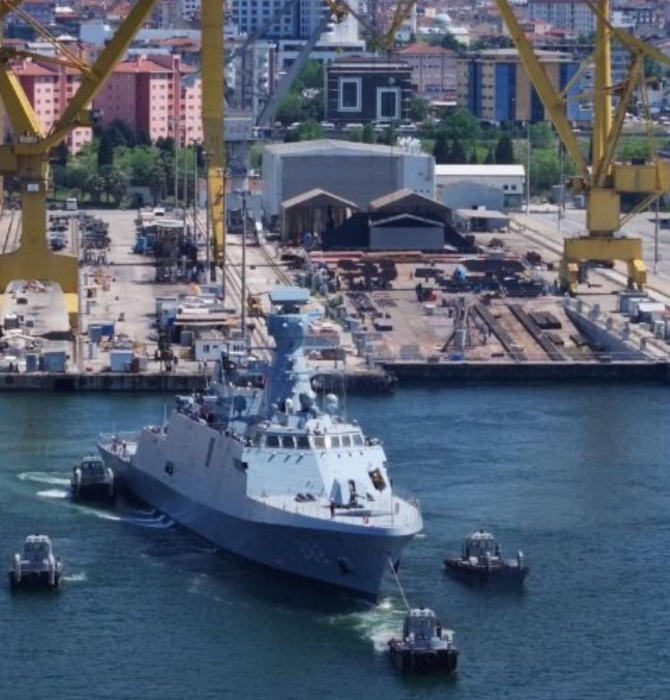9443Views

Pakistan Navy Chief: Hangor Submarines “Coming Very Soon” Quwa Premium
In an interview with China’s Global Times, the Pakistan Navy (PN) Chief of Naval Staff (CNS), Admiral Naveed Ashraf said that the fleet will start getting its new Hangor-class submarines “very soon.”
Pakistan ordered eight modified S26 submarines from China Shipbuilding & Offshore International Co. Ltd (CSOC) in 2015 under a multi-billion-dollar package that also included four Type 054A/P multirole frigates and other naval vessels.
The CSOC S26 is a variant of the Type 039-series built for the People’s Liberation Army Navy (PLAN), but meant for export. Since its introduction, the S26 was ordered by Pakistan and Thailand, though the latter may not take up its order, despite the boats being in production.
Under the deal, Pakistan’s Karachi Shipyard & Engineering Works (KSEW) would manufacture four of the boats under a transfer-of-technology (ToT) program from China. According to the PN leadership in 2020, the Hangor-class boats would transform the PN into a “submarine-building navy.”
The original delivery timeline of the submarines was from 2022 to 2028. However, the project ran into delays due to various issues. The first of these was the fallout of the pandemic in 2020. The second, more significant setback, was Germany’s refusal to transfer diesel engines for the submarines.
However, the PN opted to stick with the program and waited for China to certify its domestic CHD-620 diesel engine, which would be used in lieu of the German MTU powerplant.
KSEW started constructing its four boats by cutting the steel of the fifth submarine in December 2021, with production of the sixth boat beginning in December 2022.
In April 2024, the Wuchang Shipbuilding Industry Group Company Ltd. launched the lead boat for sea trials. The CNS’ statements would suggest that the lead boat is nearing the completion of its test and, in the coming months, will join the PN fleet.
The Hangor-class submarine is a significant program for the PN–but not for the reasons many seem to be focusing on. Today, the discussion around the PN’s forthcoming submarines focuses around how the PN could use the boats for the nuclear deterrence role.
Yes, the submarines will likely support Pakistan’s deterrence goals, and play a role in building a second strike capability by carrying Babur 3 submarine-launched cruise missiles (SLCM). However, the nuclear role is not in the main mission set of the Hangor-class.
Rather, the Hangor-class submarines are meant to help the PN extend its reach and elevate its capacity for naval operations, be it to secure Pakistan’s maritime interests, or deter the Indian Navy (IN). In other words, the sub-surface fleet’s main tasks are to support anti-ship warfare and anti-submarine warfare.
All eight submarines will be configured with a Stirling air-independent propulsion (AIP) system. The use of AIP will allow the boats to operate underwater for extended periods of time (up to several weeks). In addition, AIP also helps lower acoustic exposure by reducing the need to frequently snorkel or surfacing for atmospheric oxygen for recharging batteries.
In practical terms, AIP-equipped submarines can operate underwater and stay undetected for relatively long periods of time. This capability makes these submarines ideal for deterring enemy naval warships from approaching specific areas of interest, such as one’s sea lanes or ports.
These deterrence qualities would likely drive the PN to use the Hangor-class submarines as part of its anti-access and area-denial (A2/AD) strategy. An A2/AD strategy is an organized approach to stopping enemy access and control of a designated area. In the PN’s context, it could involve denying naval foes the space to enter and control parts of Pakistan’s exclusive economic zone (EEZ), or national waters. It might even involve denying India the ability to control Pakistan’s sea lanes during a conflict.
While the above may sound like a big leap for the PN, then that is exactly the reason why the PN’s fleet of AIP-equipped submarines will grow from 3 boats to over 11 by the mid-2030s. That is nearly a 400% or 4X increase in fleet size, and, remarkably, would only amount to the baseline of the PN’s goals. The Royal Thai Navy (RTN) S26T might also be of interest to the PN, giving it a quick way to notch its fleet to 12 AIP-equipped submarines in a relatively short period of time.
In tandem with the Hangor-class submarine, the PN is also seeking a shallow water attack submarine (SWATS). Sources told Quwa that the PN SWATS would also leverage an AIP system. Turkiye’s STM Defence and Italy’s Fincantieri are both competing for the PN’s SWATS program.
Besides taking over special operations roles from the PN’s aging MG-110s, the SWATS itself could also be an A2/AD asset. Being a smaller boat, it could operate in Pakistan’s shallower waters, leveraging the busier waters to mask its acoustic signature and, in turn, offer an additional defensive layer, particularly against enemy amphibious activity. The presence of SWATS boats closer to Pakistan’s shores will also free the PN to send its Hangor-class submarines farther out into sea.
The Hangor-class submarine simply marks the start of the expansion process, which will later shift to a SWATS design and, in line with the “submarine-building navy” ambition, an original submarine project to replace the Agosta-line and further grow the PN subsurface fleet.
Relative to the size of Pakistan’s coastlines, the PN will soon possess a relatively powerful submarine fleet, potentially the largest concentration of AIP-equipped submarines in the Arabian Sea. However, the real, and recurring, question will the fiscal exchequer be able to sustain it?


